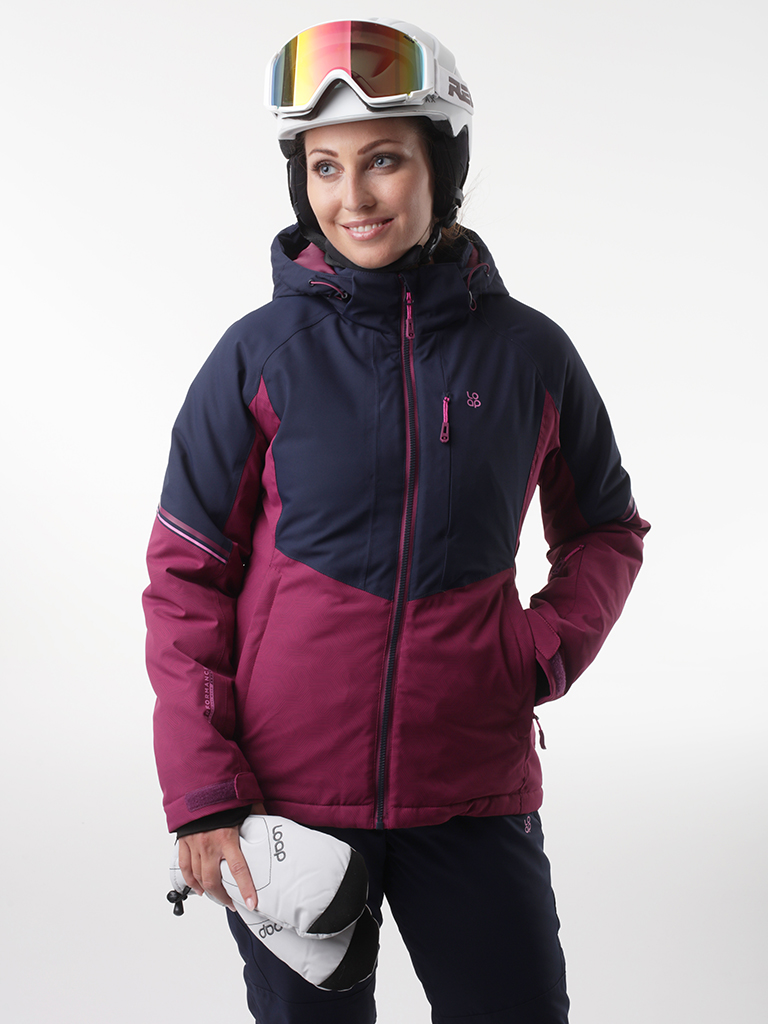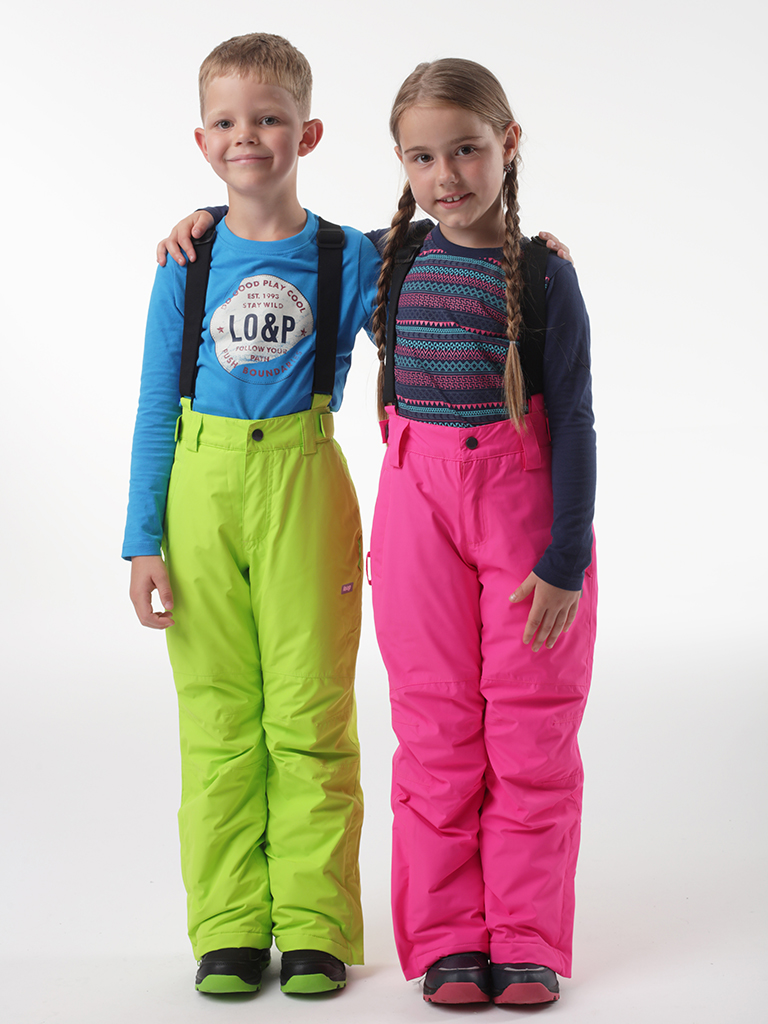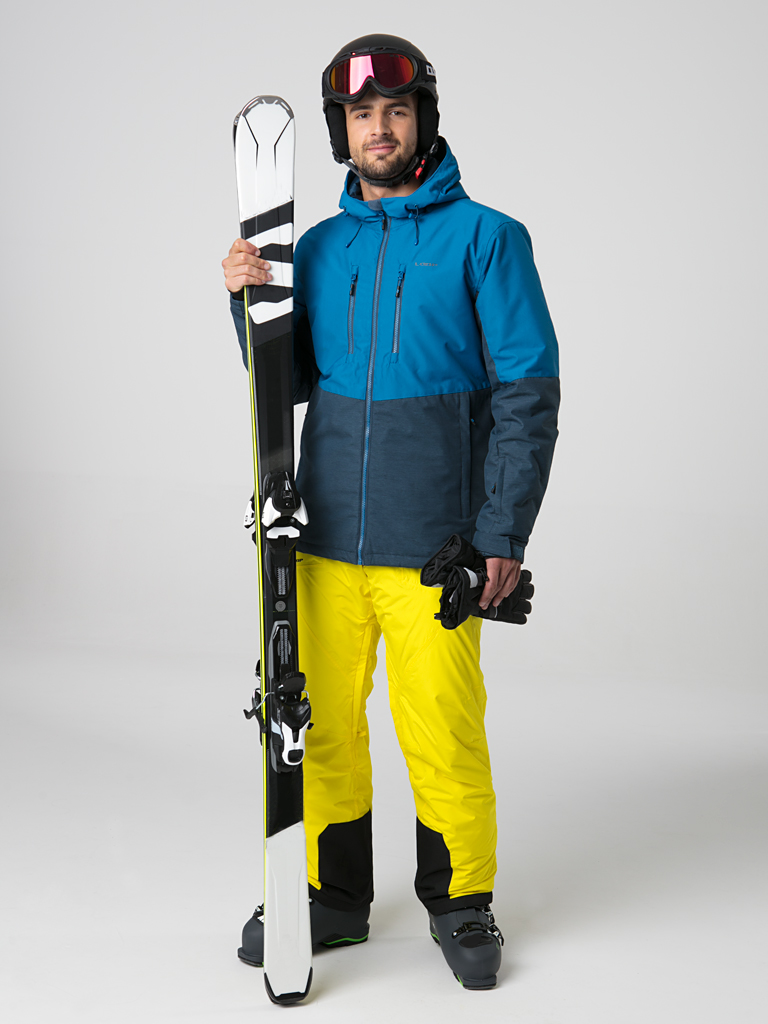How to choose a ski jacket and trousers
Don’t rush your selection. Ski jackets and trousers aren’t very cheap and you don’t want to buy them for a single season. It would be a pity if you found out after first run that it doesn’t really fit you. Don’t allow yourself to become nervous in the store because you’re taking time to choose. On the contrary, be thorough and even try everything several times. Before you go to the store, we'll advise you on what to focus on when choosing.
Should I buy an insulated winter jacket or not?
This mainly depends on how cold you usually get and how much you ski. If you are an all-action skier that hardly ever stop, it’s likely that you will be warmed up enough by the skiing itself. You will need a more breathable jacket without insulation that diverts the sweat. If it gets cold and you start to feel chilly, use the clothes layering system. Dress up with another functional layer: thermal underwear or sweatshirt. You can add or remove individual layers if necessary.
LOAP tip: The ski jacket doesn’t have to be "heavy" or "thick". Thanks to modern technologies, the jackets produced are thin and light but still warm.
On the contrary, if you are a holiday skier, a beginning or an occasional skier who just goes downhill a few times and then heads for a sauna or grog, you will need an insulated jacket that warms you up. Even insulated jackets are breathable, but not quite so much. It’s more important that they keep their warmth. For example, definitely don’t buy such a jacket if you want to do ski-alpinism. You would hate it when climbing a hill.
LOAP tip: Buy a jacket that’s windproof. It’s very windy in the mountains, so don’t allow the wind to get at you.
How to choose the size of the ski jacket?
The jacket mustn’t be too tight anywhere. You need to move, breathe or bend normally in it for a fallen glove, etc. In short, you must feel well in it. But it shouldn’t be too big so the heat doesn’t escape from it. Try your jacket over the clothes that you wear to ski. So first put on your thermal underwear, then your sweatshirt and jacket. Close it up to your chin, lift your hands, bend down and take a deep breath, stretch, turn your torso to both sides and so on. If the jacket isn’t tight anywhere, isn’t too stretchy and has long enough sleeves, then it’s the right one for you.
What about ski trousers, how to choose them?
Ski trousers should be chosen in the same way as the jacket. If you're going to be standing in a queue near the ski-lift, buy insulated ski trousers. But if you're going all day to race with the wind or climb the snowy hills, you just have to get trousers without insulation and wear thermal pants underneath them.
Trousers have to fit well at the waist and knees and it should also match the jacket.
We don’t mean match colour-wise, but the clip. Ski trousers and jackets often have loops where you can pin them together. If you use this feature, you should select your jacket and trousers at the same time.
What is the difference between the membrane and the coating?
The coating is a special layer that is applied directly to the fabric. In the case of LOAP jackets, a high quality polyurethane film with a microporous structure is used as a coating. It prevents water leaks while allowing the body moisture to evaporate.
The membrane is also a waterproof and breathable layer but is either freely inserted between the upper material and the lining or it’s bonded to the outer material by lamination. In the case of three-layer lamination, the membrane is also bonded to the lining.
What water column do I need on my jacket and trousers?
If you go to classic ski resorts in our country or abroad and when it rains you pack up and prefer to go to the hotel, a 3000-5000 mm water column is sufficient for you. Such jackets or trousers don’t get wet through so quickly and it doesn’t matter when you occasionally fall into the snow. But if you're going to ski in the wild regardless of the weather, invest more in the higher water column.
LOAP tip: Do you want to learn more about the water column? Read our detailed article on What water column to choose on your jacket: 3000, 5000 or 8000 mm?
Don’t just look at the water column values. Make sure your ski jacket and trousers have glued or at least partially glued seams. If the seams are taped, water doesn’t flow through them.
What breathability should I require?
It depends a lot on how much you move on the slopes. If you're standing around more or comfortably ski, you can get a little cold in a very breathable jacket. If you ski and move around a lot, you need a jacket to divert sweat. Then a jacket with higher breathability is worth it. Again, in our conditions breathability of 3000-5000 g /m2/24 hours should be sufficient.
Don’t wear a cotton t-shirt and sweatshirt under the functional ski jacket!
It causes the moisture removal to stop working. Cotton clothing sucks up the sweat, it doesn’t evaporate. Soaked clothes will begin to feel cold, you’ll get be cold and therefore, you’re just a step away from contracting a cold. So if you already have a functional jacket, wear thermal underwear and a sweatshirt of functional materials underneath it that also divert moisture.
What features a good ski jacket should have?
A lot of things you can really appreciate in the mountains. Here is the list of 7 cool things that your ski jacket should have.
- A snow belt
Thanks to this, snow doesn’t get under the jacket. With some jackets it can be unclipped.
- Inner elasticated sleeve with a thumb hole
A feature thing that not only keeps you warm but also prevents snow from getting into the sleeves and being cold in your gloves.
- Adjustable sleeves
You have to be able to tighten your sleeves around your wrists to keep the wind out.
- Ventilation in the armpits
When you start to sweat, you can boost the breathability of the jacket by opening the ventilation.
- Adjustable hood
The hood must be adjustable so it doesn’t fall off your head. You should be able to pull it over the helmet or be able to untie it.
- Waterproof or covered main zip
It is good when the zip is waterproof or at least hidden under a waterproof strip of fabric.
- Inner and outer pockets
The more pockets, the better. You'll need a pocket for your glasses, phone, papers, ski-pass and other necessities. Many skiers also appreciate the headphone opening.
The reflective elements are also very useful. If possible, choose a jacket that includes them.
What features good ski trousers should have?
Even in the case of ski trousers we've put together 7 things you should require.
- Upper part on back
It won’t blow up your back and when you accidently fall and the jacket rides up, you’ll still have a protected back.
- Strips or belt loops
They help to keep your trousers in place.
- Anti-knee cuff
Similar to the snow-belt in the jacket. It prevents the snow from getting under the trousers.
- Shaped knees
Trousers with shaped knees won’t limit you in any way even when you bend.
- Ventilation
Do you sweat? Are you often too warm? Just open the ventilation a bit.
- Adjustable trousers legs
The trousers legs should have a zip on the side to extend them at the bottom and drag over the ski-boots. You certainly don’t want snow falling into your shoes.
- Pockets
You'll have the important things in the jacket, but they are also good for a handkerchief and other little things.
There is also a good adjustable waist that you can tighten or loosen and reflective elements are good for better visibility.
Can I ski in a softshell jacket and trousers?
When it’s a nice sunny day and you’re on the move, you definitely can. Softshell is flexible, very comfortable, but it’s not suitable for harsh winters. Be sure to add more functional layers underneath it to keep you nicely warm.




